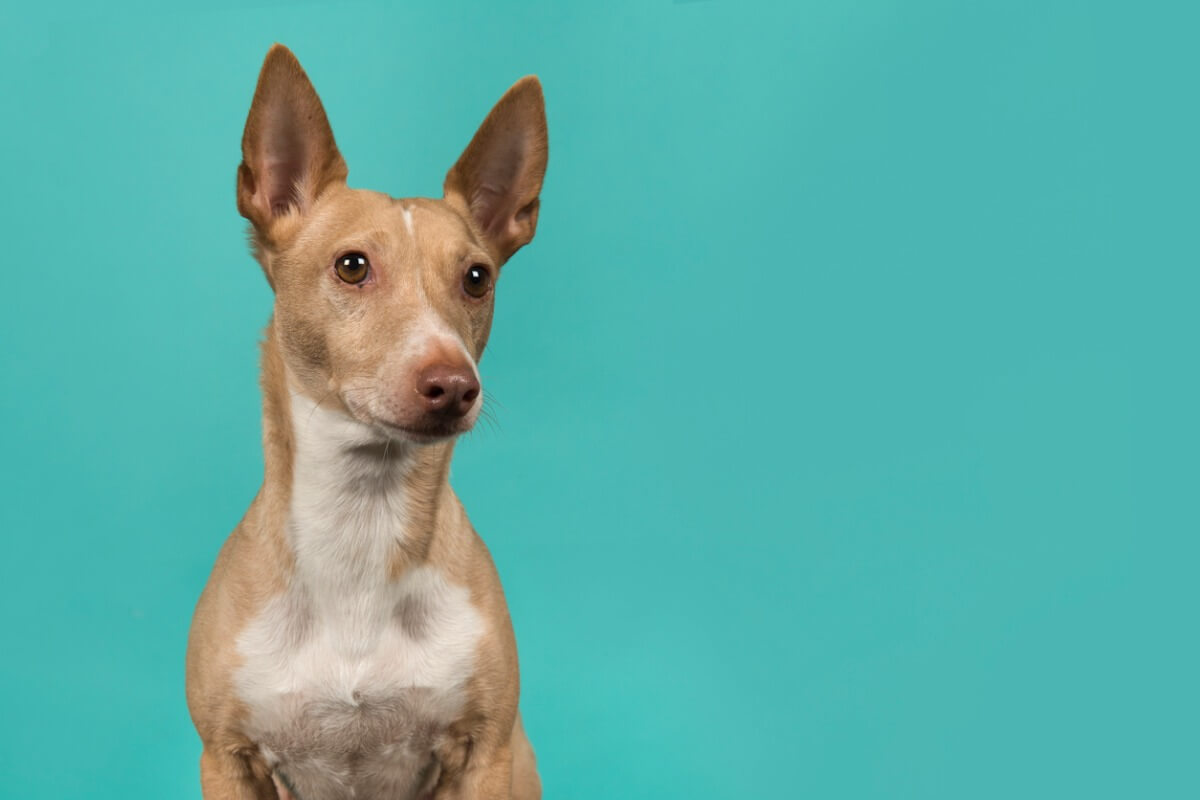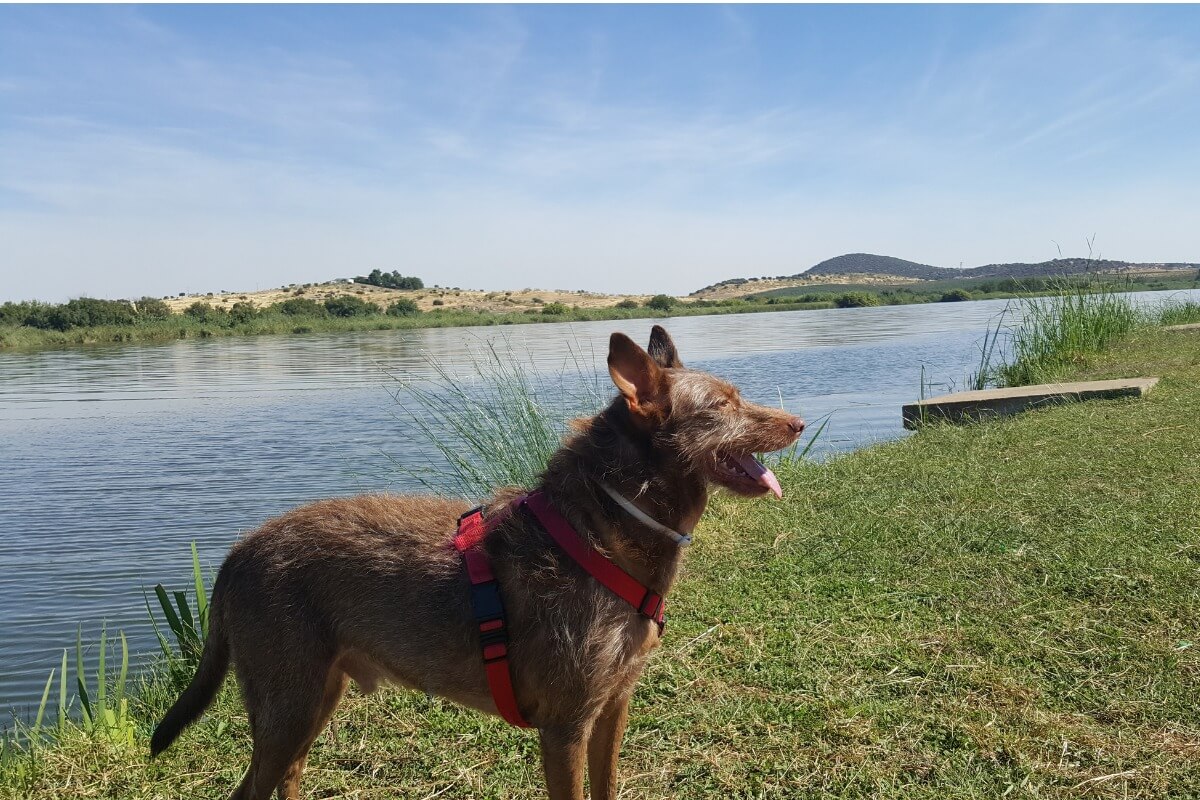Andalusian Hound: All About this Breed

The Andalusian Hound is an elegant and proud dog. However, and despite many similarities, it shouldn’t be confused with other hounds, such as the Spanish or Ibizan types.
So, in the following lines, we’re going to tell you a little more about the origin of this breed, its characteristics, temperament, care needs, and other aspects that make it unique. Would you like to find out more? Keep reading.
Features of the Andalusian Hound
According to the Costa del Sol Canine Society, the ancestors of the Andalusian Hound originate from ancient Egypt and were introduced to the Iberian Peninsula more than 3000 years ago by the Phoenician traders. Its lineage is very old.
Although it shares the same origin with other hounds, each variety has its own individual characteristics, due to evolutionary changes and breeder management. Although it’s an ancient breed, it wasn’t recognized until 1992 by the Royal Canine Society of Spain (RSCE). However, the Federation Cynologique Internationale (FCI) still hasn’t accepted it to this day.

Body and head
The Andalusian Hound has a very slender and elegant body and a short, broad back, as well as a very pronounced and well-developed musculature. According to the RSCE standard, it has low withers and a wide-set neck, while its tail is low-set, arched, and of medium thickness.
The head is elongated and square in shape, with a slightly subconvex, straight, muzzle and a round, honey-colored nose. Its eyes are small, round, and mellow or hazel and its ears are triangular, medium-set, and with a pointed tip.
Coat and color
The Andalusian Hound comes in 3 varieties according to the coat: smooth or short hair (which is hard to the touch and fixed); bristly hair (which is hard to the touch), and long, silky hair.
The bristly and silky-coated dogs have a rich coat over most of their body, except for the head and limbs, where it’s a little shorter. As for the color, the Andalusian Hound has a clear or light cinnamon tone, or an ivory, mat, or silver-white tone). Other colors aren’t accepted according to the RSCE standard.
Size and weight
There are three different sizes for the Andalusian Hound. They are as follows:
- Big: The big Andalusian hounds weigh between 6 and 27 kilograms (13 to 60 pounds). The females have a height of between 53 and 61 centimeters (20 to 24 inches) and the males between 54 and 64 (21 to 25 inches).
- Medium: These dogs weigh between 6 and 16 kilograms (13 to 35 pounds) and the height of the females is between 42 and 52 centimeters (16 to 20 inches approx.) and the males between 43 and 53 centimeters (17 to 21 inches).
- Small size: These dogs weigh between 3 and 8 kilograms (6.6 to 17.6 pounds) and their height ranges between 32 and 41 centimeters (12.6 to 16 inches) for females and 42 and 45 centimeters (16.5 to 17.7 inches) for males.
The character of the Andalusian Hound
This breed is distinguished by being sociable and intelligent, as well as affectionate and very balanced. Because the Andalusian Hound has been a hunting dog, it’s always alert and ready to react according to its owner’s instructions.
It must be said that the Andalusian Hound is a very loyal and faithful dog to its family. For this same reason, they’re wary of strangers, although they aren’t aggressive if there are no clear signs of an attack.
Training
When they’re puppies, Andalusian hounds need a good socialization process with their pack, including their mother and siblings. Experts recommend extending this period for about two and a half months in order to prevent the adult from becoming insecure or fearful.
Once this period is over, the owner should teach them to follow basic toilet training rules, as well as rules to respect objects in the house, among other things. On the other hand, you’ll need to establish training and play days in order to focus the canine’s energy outside and promote a calmer state of mind inside the house.
Care tips and health conditions of the Andalusian hound
The Andalusian hound requires the basic care that any pet should receive: quality food, walks, a comfortable area, and a lot of affection from the owner. In addition to this basic care, you’ll need to give them special attention according to their coat type, such as brushing and bathing. You’ll need to remove dead hair once a week, while the baths can be given every month or two months.
Being a hunting and intelligent breed, it must be stimulated with olfactory and interactive toys. In addition to this, they’re very sociable dogs, so the owner should ensure that the dog doesn’t spend more than 6 to 8 hours alone.
The Andalusian hound is a very healthy breed. It doesn’t suffer from congenital diseases and isn’t susceptible to developing life-threatening problems. It only needs good care and attention from its owner and that this is responsible to follow the schedule of vaccinations and deworming.
However, if the dog is involved in hunting work, they may suffer from dislocations of the knee or elbow, as well as strains, and wear and tear in the joints. Continuous check-ups can prevent these ailments.

Did you know all this about the Andalusian Hound?
The Andalusian Hound is a beautiful, very loyal, and active dog. Without a doubt, it’s worth adopting one of these dogs and giving it love and you can be sure that it’ll return that love to you tenfold.
So, had you heard of this breed before today? We hope you enjoyed finding out about it.
All cited sources were thoroughly reviewed by our team to ensure their quality, reliability, currency, and validity. The bibliography of this article was considered reliable and of academic or scientific accuracy.
- RSCE. (Marzo 1992). Podenco Andaluz. Real Sociedad Canina de España. 2019.
- SCCS. Podenco Andaluz. Sociedad Canina Costa del Sol. 2019
This text is provided for informational purposes only and does not replace consultation with a professional. If in doubt, consult your specialist.